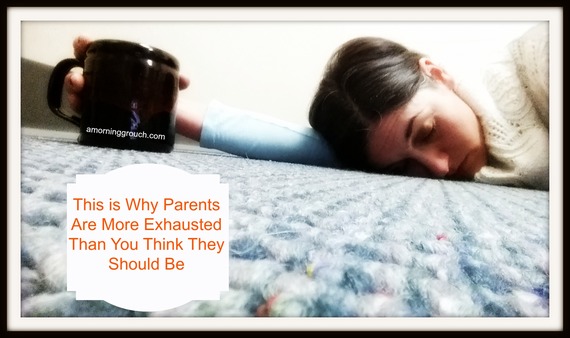I can't stress any further the importance of protein in our diet regime as we age....
Thank you
Kristina for the wonderful article! (original article
here)
As medicine continues to advance and we are living longer, quality of life remains a high priority. Age can also bring with it some real weight struggles, like the stubborn middle-age spread and what feels like a sluggish metabolism. Meeting nutritional needs as you age may require an adjustment in lifestyle, including what you eat and how you exercise. Here are some things to keep in mind as you get closer to the golden years:
1. Eat light, frequent meals. Eating often throughout the day promotes energy, reduces fatigue and improves mood. Keeping meals small and blood-sugar levels stable by eating consistently may also reduce the risk of overeating. As you age, your GI tract slows down, making it harder to eat big meals without feeling uncomfortable. Small meals help your body absorb nutrients, too, because they are less taxing to digest.
2. Add protein to every meal and snack. As you age, protein is even more important. The body relies on amino acids found in protein foods as a trigger for muscle building. We all know metabolism slows as we age, but that’s mostly due to the breakdown and loss of muscle. Getting enough amino acids in the diet, specifically leucine, has also been linked to lower body-fat percentages. Protein also helps promote bone health and decreases risk for bone fractures. Animal proteins, in particular, contain a lot of B12, an important vitamin that we tend to malabsorb as we age, so older adults may need to increase their protein intake to get adequate amounts.
3. Reduce refined sugars. Rid the diet of processed sugars and refined carbohydrates, especially soda and other sugary drinks. A high sugar diet has been linked to poor bone mineral density (think: reduced bone strength) and weight gain. It’s OK to indulge every now and then, but follow the 80/20 rule, where 80% of the time you’re eating high-quality, minimally processed foods with little to no added sugars.
4. Fill up on fiber. Fiber promotes regularity, which often decreases with age. This puts the body at risk for diverticular disease, a condition where pouches called diverticula develop within your colon walls and can become inflamed. While only 1–2% of adults under age 30 get this disease, 50–66% of those over 80 do. Want to up your fiber game? Reach for fiber-rich beans, raspberries, pears, apples, whole grains, nuts and seeds.
5. Eat more fish. Fish and seafood are high-quality protein foods that should be included in the diet at least 2–3 times per week. Fatty fish (think: tuna, salmon, halibut, mackerel, anchovies and sardines) help with reducing inflammation, arthritis, heart disease, strokes, bone loss, mood issues and memory disorders.
6. Adjust portion sizes. Calories need to be adjusted to prevent weight gain because our metabolism slows down with age, and we’re also more likely to be sedentary. Eating smaller portion sizes helps shave calories to adjust for a decreased level of physical activity, both in intensity and duration, as we age.
7. Reduce blood pressure with potassium. We commonly link high sodium in the diet with heart issues, but have you ever thought about potassium? Increasing potassium-rich foods can help reduce blood pressure and stroke risk, but many people fall short of their potassium goals of 4,700 milligrams per day as recommended by the
2015 Dietary Guidelines. Potassium may also help reduce risk of developing kidney stones and bone loss with age. How can you get more potassium? Reach for root vegetables, leafy green vegetables and fruits that grow on a vine. For a potassium-rich diet, eat potatoes (white and sweet), winter squash, carrots, spinach, beet greens, kiwi, bananas, tomatoes, oranges, peaches, prunes, beans (especially white), lentils, yogurt, milk and fish. Keep in mind that too much potassium can be dangerous (this most commonly happens from taking supplements), so up your intake by eating healthfully instead of supplementing unless advised by a doctor.
8. Hydrate right. Make a habit to start the day with a tall glass of water, and drink plenty throughout the day. As we age, our thirst receptors decrease, which may lead to subpar fluid intakes and dehydration. Medications may also interfere with our ability to feel thirsty, making it easier to become dehydrated.
9. Build up your immunity. Enjoy a strong and vibrant life by keeping the immune system in shape. Immunity does weaken with age so you’re less able to fight off the common cold or flu. Some scientists conclude that seniors are more vulnerable due to decreased production of the cells that fight off infection. Take extra precautions to stay healthy by eating an antioxidant-rich diet high in colorful fruits and vegetables, specifically those that contain vitamins A and C, and zinc. Aim to include at least three colors at each meal — the more the better.
10. Add flavor with herbs. Senses are less sharp with age. Reduced taste acuity and smell can make it challenging to make food flavorful. Instead of turning to the salt shaker (a common pitfall), season foods with herbs and spices. The good news is these ingredients are also rich in antioxidant power.
11. Start blending. If it’s harder to chew through tough meats or you just don’t feel like cooking an elaborate dinner, add soups and smoothies to your diet. They are easy to eat and can be really comforting and nutrient-rich. Stick to those with lots of fruit and vegetables. And, vegetarian proteins are softer in texture yet convenient for adding nutrients; play with yogurt, milk, kefir, tofu and beans.
12. Support your bones. Calcium is commonly a diet shortfall. At age 50, the Recommended Dietary Allowance for this mineral increases to 1,200 mg/day because shortages are linked to brittle bones. Dairy is a major source of calcium in the American diet, but many of us increasingly become lactose intolerant as we age. Instead of turning to lactose-rich sources like milk, try dairy products with less lactose such as cheese and yogurt. Or, read our
calcium-rich alternatives to milk.
13. Get a daily dose of sunshine. Getting outdoors does the body good on many levels. Sunlight helps the body make vitamin D, improves mood by boosting serotonin in the brain and regulates circadian rhythms to promote healthy sleep habits. After age 70, the RDA for vitamin D increases to 800 IU per day. Vitamin D is used in the body to absorb calcium, prevent osteoporosis and maintain bone density. It also can provide protection against some forms of cancers, arthritis and autoimmune diseases, and it may reduce the risk of falls in older people as well as symptoms of menopause. Supplementation may be necessary, considering an 8-ounce serving of fortified whole milk (one of the richest vitamin D sources) only contains 124 IU. Fatty fish, egg yolks and fortified cereals are other good sources.
As a population, we are also spending less time outside and wearing more protective clothing that decreases the absorption of vitamin D from sunlight. Get vitamin D levels checked annually with a routine blood work to determine whether intakes are adequate before supplementation.

 JUSTIN ROBINSON Contributor
JUSTIN ROBINSON Contributor











